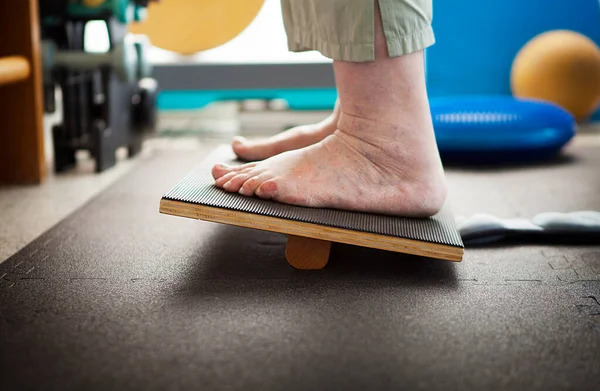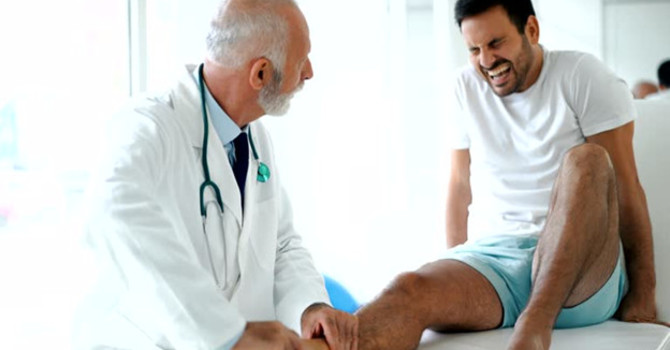
There are many things we take for granted until they are affected as we age. As time goes on, we start to see how our bodies change, affecting our overall health and mobility. Balance is one of those crucial elements we need to stay active and independent well into our golden years. It keeps us standing upright and aids us in navigating everything from going up a flight of stairs to navigating busy streets and beaches. As we get older, maintaining that steady balance requires a bit more effort.
The good news is, aging doesn't have to mean an inevitable decline in your overall stability. In fact, by understanding how balance works and taking proactive steps, you can significantly improve your footing, reduce your risk of falls, and continue to enjoy an active, independent life.
Essential Elements of Balance and the Effects of Aging
Our balance is affected by 3 different systems: our vision, vestibular system, and proprioception.
1. The Visual System
Your eyes provide crucial information about your surroundings: the horizon, obstacles, the direction you're moving in, and how quickly you're moving. Age-related changes in vision, like reduced depth perception or difficulty seeing in low light, can impact how your brain uses this information for balance.
- Effect of Aging: Declines in visual acuity, depth perception, contrast sensitivity, and adaptation to light changes are common.
- Impact on Balance: Reduces the ability to use environmental cues for orientation, identify obstacles, and accurately judge distances, causing an increase in the risk of missteps.
2. The Vestibular System
Tucked away in your inner ear, this system detects head movements and your body's position in space, acting like your personal navigation system. As we age, the delicate sensors here can become less efficient and can also be affected by hormones, brain changes, and other diseases.
- Effect of Aging: Sensory hair cells and nerve fibers in the inner ear gradually decrease.
- Impact on Balance: Leads to less accurate information about head movement and position, making it harder to sense motion or recover from disequilibrium, especially in the dark or on uneven surfaces.
3. The Somatosensory System (Proprioception)
Sensors in your muscles, joints, and skin (especially on the soles of your feet) tell your brain where your body parts are and how they're interacting with surfaces. Over time, these sensors can become less responsive, and natural declines in muscle strength and flexibility can also affect your ability to react and stabilize quickly.
- Effect of Aging: Reduced sensitivity in skin receptors (especially feet), less efficient proprioceptors in joints/muscles, and loss of muscle mass and strength (sarcopenia).
- Impact on Balance: Diminishes the brain's awareness of body position and contact with surfaces, slows reaction time to balance disturbances, and reduces the physical power needed to maintain or regain stability.
When these systems work seamlessly together, you feel steady. When one or more begin to slow down, your balance can be challenged, increasing your risk of stumbles and falls.

Your Action Plan for Better Balance
Improving balance doesn’t require costly equipment or complex routines. By applying some simple yet effective strategies in everyday life, you can significantly boost your confidence and stability. Remember to start slowly, listen to your body’s cues and always make sure you have support nearby (like a chair or countertop) when beginning new exercises.
Here are some tips to get you started:
1. Talk to Your Doctor First
Always check with your doctor or a physical therapist before starting new exercises, especially if you have health conditions or concerns about falling. They can give you personalized advice.
2. Prioritize Safety
When you practice:
- Use support: Always have a sturdy wall, counter, or chair nearby to hold onto if you feel wobbly.
- Clear your space: Make sure your exercise area is free of clutter or rugs you could trip over.
- Be mindful of footwear: Choose supportive, non-slip footwear or go barefoot when you're at home (not wearing shoes can help to train your proprioception).
3. Start with Simple Exercises
Begin with gentle movements to build a strong foundation. Aim for 10-30 seconds per exercise, or a few repetitions.
- Weight Shifts: Stand with feet hip-width apart and gently shift your weight from side to side, feeling the change in your feet. Shift your weight until only your toes on one foot are touching the ground.
- Standing Feet Together: Stand with your feet touching. Focus on staying still.
- Tandem Walking: Along a wall, walk with one foot right in front of the other. Touch your heel of the front foot to the toes of the back foot as you walk, and try to stay upright as you walk.
4. Progress Gradually
As you get steadier:
- Increase time: Hold balance positions for longer or walk for longer distances.
- Less support: Lightly touch your support, then try letting go for short periods with a hand hovering over the wall or stable surface.
- Progress the exercise: You can make these exercises harder by incorporating slow head turns, holding a light weight in one hand, or standing/walking on an uneven surface. Make sure to stay near a stable surface just in case you need it.
5. Add Strength and Movement
Remember, strong muscles support good balance.
- Include leg and core strengthening exercises like calf raises or marching.
- Consider activities like Tai Chi or Yoga if available; they're helpful for improving balance.
6. Be Consistent
Aim to practice your balance exercises regularly, even for just a few minutes a day, to see the best results. Your body adapts to what you practice!

How Physical Therapy Can Help You Boost Your Balance
Physical therapy can significantly help improve your balance, especially as you age. It offers a personalized and effective approach to keeping you steady and confident.
1. Thorough Assessments
The PT starts with a detailed evaluation to understand your specific balance challenges. They'll test your balance, strength, flexibility, and analyze how you walk and move. They can also look at how your inner ear, vision, and proprioception contribute to your stability. This can help them pinpoint the exact areas needing improvement.
2. Personalized Exercise Program
Based on their assessment, a PT can create a balance and stability exercise plan just for you. This may include:
- Targeted Balance Exercises: Specific drills to challenge and improve your stability on different surfaces or during movement.
- Strength Training: Focused exercises to strengthen key muscles in your legs and core, which are vital for preventing falls and ensuring good mechanics with functional movements (like walking, going up/down stairs, and sitting down on a chair).
- Gait Training: Helping you refine your walking pattern to be safer and more efficient.
- Vestibular Rehabilitation: If inner ear issues or vestibular symptoms are affecting your balance, they can guide you through specific exercises to help your brain and body adapt.
3. Fall Prevention Strategies & Education
Beyond exercises, a PT equips you with practical knowledge:
- Home Safety: Advice on how to make your living space safer by removing hazards.
- Assistive Devices: Guidance on using canes or walkers correctly if needed.
- Confidence Building: Helping you overcome the fear of falling by improving and challenging your physical abilities in a safe and controlled environment.
4. Ongoing Support
PTs will monitor your progress and adjust your program as you improve or if new concerns arise. They are your partner in building lasting stability.
In short, a physical therapist provides the specialized guidance and tailored exercises you need to safely and effectively enhance your balance, helping you maintain your independence and enjoy life more fully. By understanding your body's incredible systems and consistently applying these practical steps, you can significantly reduce your risk of falls and live with greater peace of mind.
Dealing with a current or past injury?
Don’t wait until it sidelines you. Schedule a 1-on-1 evaluation or movement assessment with our physical therapy team to address pain, instability/balance, or mobility issues.

Valentine Ngo
Contact Me



